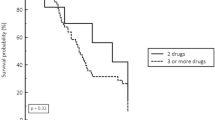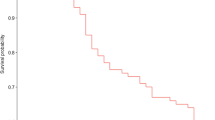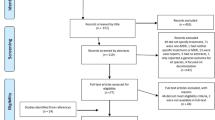Abstract
The present study investigated the clinical course, treatment pattern, prognostic factors, and outcome of patients with pun-drug resistant (PDR) infections. This was a retrospective single-center cohort study including consecutive eligible patients with a PDR infection hospitalized at the University Hospital of Heraklion, Crete, Greece, between January 2010 and June 2018. In total, 65 patients with infections due to PDR gram-negative pathogens were identified. The median age was 64 years (interquartile range, IQR: 45.5–74.5) and the median Charlson comorbidity index 3.0 (IQR: 1.0–5.75). Of the 65 PDR isolates, 31 (48%) were Klebsiella pneumoniae, 28 (43%) Acinetobacter baumannii, and 6 (9%) Pseudomonas aeruginosa. The most common empirical therapy was colistin-based combination (n = 32; 49%), followed by non-colistin, non-tigecycline combination (n = 25; 39%), and carbapenemes + tigecycline (n = 8; 12%). The empirical therapy was effective in 50%, 37.5%, and 8% of patients receiving colistin combination, carbapenemes – tigecycline, and non-colistin, non-tigecycline combination, respectively (p value = 0.003). The infection-related in-hospital mortality was 32% (95% confidence interval, CI: 21–45%). Three factors were significantly associated with infection-related in-hospital mortality in multivariate analysis: Charlson comorbidity index (odds ratio, OR: 1.5, 95% CI: 1.0–2.3, p value = 0.030), prior steroid use (OR: 4.1, 95% CI: 1.0–17.0, p value = 0.049), and empirical treatment with non-colistin, non-tigecycline combination (OR: 7.5; 95% CI: 1.7–32.8, p value = 0.008). Infections due to PDR pathogens are associated with considerable mortality. Our results support the use of colistin and/or tigecycline-based combinations as empirical therapy when infection due to PDR pathogens is suspected.
Similar content being viewed by others
References
O'Neill J (2014) Review on antimicrobial resistance antimicrobial resistance: tackling a crisis for the health and wealth of nations: Review on Antimicrobial Resistance, London
European Centre for Disease Prevention and Control (ECDC) and European Medicines Agency (EMEA) Joint Working Group. (2009) ECDC/ EMEA Joint Technical Report: The bacterial challenge: Time to react. Stockholm
Colomb-Cotinat M, Lacoste J, Brun-Buisson C, Jarlier V, Coignard B, Vaux S (2016) Estimating the morbidity and mortality associated with infections due to multidrug-resistant bacteria (MDRB), France, 2012. Antimicrob Resist Infect Control 5:56
Carter D, Charlett A, Conti S, Robotham JV, Johnson AP, Livermore DM et al (2017) A risk assessment of antibiotic pan-drug-resistance in the UK: Bayesian analysis of an expert elicitation study. Antibiotics (Basel) 6:E9
Magiorakos AP, Srinivasan A, Carey RB, Carmeli Y, Falagas ME, Giske CG et al (2012) Multidrug-resistant, extensively drug-resistant and pandrug-resistant bacteria: an international expert proposal for interim standard definitions for acquired resistance. Clin Microbiol Infect 18:268–281
de Kraker ME, Stewardson AJ, Harbarth S (2016) Will 10 million people die a year due to antimicrobial resistance by 2050? PLoS Med 13:e1002184
Abat C, Fournier PE, Jimeno MT, Rolain JM, Raoult D (2018) Extremely and pandrug-resistant bacteria extra-deaths: myth or reality? Eur J Clin Microbiol Infect Dis 37:1687–1697
Falagas ME, Bliziotis IA, Kasiakou SK, Samonis G, Athanassopoulou P, Michalopoulos A (2005) Outcome of infections due to pandrug-resistant (PDR) Gram-negative bacteria. BMC Infect Dis 5:24
Tsioutis C, Kritsotakis EI, Maraki S, Gikas A (2010) Infections by pandrug-resistant gram-negative bacteria: clinical profile, therapeutic management, and outcome in a series of 21 patients. Eur J Clin Microbiol Infect Dis 29:301–305
Wang CY, Jerng JS, Chen KY, Lee LN, Yu CJ, Hsueh PR et al (2006) Pandrug-resistant Pseudomonas aeruginosa among hospitalised patients: clinical features, risk-factors and outcomes. Clin Microbiol Infect. 12:63–68
Falagas ME, Rafailidis PI, Matthaiou DK, Virtzili S, Nikita D, Michalopoulos A (2008) Pandrug-resistant Klebsiella pneumoniae, Pseudomonas aeruginosa and Acinetobacter baumannii infections: characteristics and outcome in a series of 28 patients. Int J Antimicrob Agents 32:450–454
Apisarnthanarak A, Mundy LM (2009) Mortality associated with pandrug-resistant Acinetobacter baumannii infections in Thailand. Am J Infect Control 37:519–520
Pontikis K, Karaiskos I, Bastani S, Dimopoulos G, Kalogirou M, Katsiari M et al (2014) Outcomes of critically ill intensive care unit patients treated with fosfomycin for infections due to pandrug-resistant and extensively drug-resistant carbapenemase-producing Gram-negative bacteria. Int J Antimicrob Agents 43:52–59
Horan TC, Andrus M, Dudeck MA (2008) CDC/NHSN surveillance definition of health care-associated infection and criteria for specific types of infections in the acute care setting. Am J Infect Control 36:309–332
Paul M, Shani V, Muchtar E, Kariv G, Robenshtok E, Leibovici L (2010) Systematic review and meta-analysis of the efficacy of appropriate empiric antibiotic therapy for sepsis. Antimicrob Agents Chemother 54:4851–4863
Clinical and Laboratory Standards Institute (CLSI). (2016) Performance standards for antimicrobial susceptibility testing; twenty-sixth informational supplement. Wayne, Pa
Food and Drug Administration (FDA). Prescribing information for tygacil (tigecycline); 2010. https://www.accessdata.fda.gov/drugsatfda_docs/label/2016/205645lbl.pdf. Accessed 16 February 2018
The European Committee on Antimicrobial Susceptibility Testing. The European Committee on Antimicrobial Susceptibility Testing. Breakpoint tables for interpretation of MICs and zone diameters; 2016. http://www.eucast.org. Accessed 27 Mar 2019
López-Rojas R, Domínguez-Herrera J, McConnell MJ, Docobo-Peréz F, Smani Y, Fernández-Reyes M et al (2011) Impaired virulence and in vivo fitness of colistin-resistant Acinetobacter baumannii. J Infect Dis 203:545–548
López-Rojas R, McConnell MJ, Jiménez-Mejías ME, Domínguez-Herrera J, Fernández-Cuenca F, Pachón J (2013) Colistin resistance in a clinical Acinetobacter baumannii strain appearing after colistin treatment: effect on virulence and bacterial fitness. Antimicrob Agents Chemother 57:4587–4589
Kohler PP, Volling C, Green K, Uleryk EM, Shah PS, McGeer A (2017) Carbapenem resistance, initial antibiotic therapy, and mortality in Klebsiella pneumonia bacteremia: a systematic review and meta-analysis. Infect Control Hosp Epidemiol 38:1319–1328
Marquet K, Liesenborgs A, Bergs J, Vleugels A, Claes N (2015) Incidence and outcome of inappropriate in-hospital empiric antibiotics for severe infection: a systematic review and meta-analysis. Crit Care 19:63
Raman G, Avendano E, Berger S, Menon V (2015) Appropriate initial antibiotic therapy in hospitalized patients with gram-negative infections: systematic review and meta-analysis. BMC Infect Dis 15:395
Bae S, Kim MC, Park SJ, Kim HS, Sung H, Kim MN et al (2016) In vitro synergistic activity of antimicrobial agents in combination against clinical isolates of colistin-resistant Acinetobacter baumannii. Antimicrob Agents Chemother 60:6774–6779
Brennan-Krohn T, Pironti A, Kirby JE (2018) Synergistic activity of colistin-containing combinations against colistin-resistant Enterobacteriaceae. Antimicrob Agents Chemother:62(10)
Cheng A, Chuang YC, Sun HY, Sheng WH, Yang CJ, Liao CH et al (2015) Excess mortality associated with colistin-tigecycline compared with colistin-carbapenem combination therapy for extensively drug-resistant Acinetobacter baumannii bacteremia: a multicenter prospective observational study. Crit Care Med 43:1194–1204
Amat T, Gutiérrez-Pizarraya A, Machuca I, Gracia-Ahufinger I, Pérez-Nadales E, Torre-Giménez Á et al (2018) The combined use of tigecycline with high-dose colistin might not be associated with higher survival in critically ill patients with bacteraemia due to carbapenem-resistant Acinetobacter baumannii. Clin Microbiol Infect 24:630–634
Liang CA, Lin YC, Lu PL, Chen HC, Chang HL, Sheu CC (2018) Antibiotic strategies and clinical outcomes in critically ill patients with pneumonia caused by carbapenem-resistant Acinetobacter baumannii. Clin Microbiol Infect 24:908.e1–908.e7
Fritzenwanker M, Imirzalioglu C, Herold S, Wagenlehner FM, Zimmer KP, Chakraborty T (2018) Treatment options for carbapenem-resistant gram-negative infections. Dtsch Arztebl Int 115:345–352
Author information
Authors and Affiliations
Corresponding author
Ethics declarations
Conflict of interest
All authors declare that they have no conflict of interest.
Additional information
Publisher’s note
Springer Nature remains neutral with regard to jurisdictional claims in published maps and institutional affiliations.
Rights and permissions
About this article
Cite this article
Kofteridis, D.P., Andrianaki, A.M., Maraki, S. et al. Treatment pattern, prognostic factors, and outcome in patients with infection due to pan-drug-resistant gram-negative bacteria. Eur J Clin Microbiol Infect Dis 39, 965–970 (2020). https://doi.org/10.1007/s10096-019-03784-9
Received:
Accepted:
Published:
Issue Date:
DOI: https://doi.org/10.1007/s10096-019-03784-9




